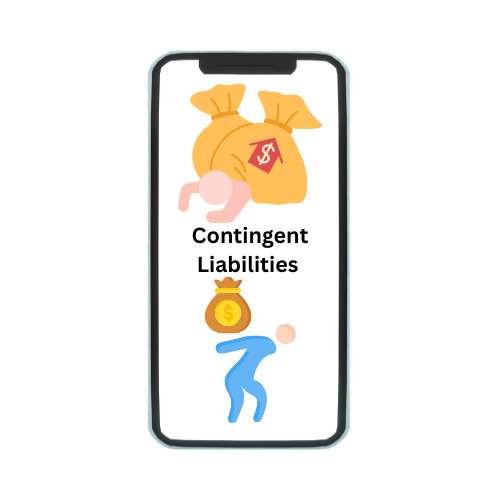Recurring revenue is a fundamental concept in business strategy, particularly in industries like software and subscription services. It refers to the predictable income that a company can count on receiving regularly, usually from customers who subscribe to a service or product and pay a recurring fee. Unlike one-time sales, which generate revenue only once per transaction, recurring revenue models create ongoing streams of income. This model not only provides financial stability and predictability but also fosters long-term customer relationships by incentivizing companies to continuously deliver value to retain subscribers. It’s a cornerstone of business scalability and valuation, making it a preferred model for modern businesses seeking sustainable growth and profitability.
What Is Recurring Revenue?
Recurring revenue refers to the predictable and continuous income that a business generates from its customers over time, typically through subscription-based models or ongoing service agreements. Unlike one-time sales, where revenue is generated from a single transaction, recurring revenue models allow businesses to collect payments at regular intervals, such as monthly or annually. This steady stream of income provides financial stability and predictability, which are crucial for business planning and growth. Examples of recurring revenue include subscription services like Netflix or Spotify, where customers pay a monthly fee for access to content, and Software as a Service (SaaS) platforms like Salesforce or Microsoft Office 365, where users pay a recurring fee for access to cloud-based software. Recurring revenue models are highly valued by businesses because they help to build long-term customer relationships, encourage customer loyalty, and support continuous product innovation and improvement.
Types Of Recurring Revenue Models
There are several types of recurring revenue models that businesses can adopt to generate steady income streams.
- Subscription-Based Model: This model involves customers paying a regular fee, usually on a monthly or annual basis, for continued access to a product or service. Examples include streaming services like Netflix, music services like Spotify, and subscription boxes.
- Usage-Based Model: In this model, customers are charged based on their actual usage of a product or service. This can apply to utilities like electricity, cloud computing services where customers pay for the resources they use, or pay-per-view services.
- Membership Model: Membership models involve customers paying a recurring fee for exclusive access to certain perks, content, or services. Examples include Amazon Prime, which offers free shipping and streaming services, or gym memberships that provide access to fitness facilities and classes.
- SaaS Model (Software as a Service): This model is prevalent in the software industry, where customers pay a recurring fee for access to cloud-based software applications. Examples include Microsoft Office 365, Adobe Creative Cloud, and Salesforce, which provide software solutions on a subscription basis.
The Benefits Of The Recurring Revenue Business Model
The recurring revenue business model offers several significant benefits that contribute to its popularity among businesses:
- Predictable Cash Flow: Recurring revenue models provide businesses with a steady and predictable stream of income. This predictability allows for better financial planning, investment decisions, and overall business stability.
- Customer Retention: Subscription-based models, in particular, encourage customer loyalty and retention. Since customers are committed to paying on a recurring basis, businesses have an ongoing incentive to maintain high customer satisfaction and continuously improve their offerings.
- Scalability: Recurring revenue models are highly scalable because they do not rely solely on acquiring new customers to generate revenue growth. Once a customer subscribes, the business can focus on expanding its customer base without the immediate pressure of generating new sales from scratch.
- Enhanced Valuation: Businesses with recurring revenue models often receive higher valuations from investors and potential buyers. The predictability and stability of recurring revenue streams make the business less risky and more attractive for investment.
- Continuous Customer Engagement: Recurring revenue models encourage ongoing customer engagement. Businesses must continually deliver value to justify the recurring payments, which drives continuous product improvement, innovation, and customer satisfaction.
- Lower Cost of Sales: Compared to one-time sales models, recurring revenue models can have lower customer acquisition costs over the long term. This is because the cost of acquiring a new customer can be spread out over the customer’s subscription period.
Recurring Revenue Challenges
While recurring revenue models offer numerous benefits, they also come with several challenges that businesses must navigate:
- Customer Churn: One of the primary challenges of recurring revenue models is customer churn, where customers cancel their subscriptions or memberships. High churn rates can significantly impact revenue streams and require businesses to continually invest in customer retention strategies.
- Initial Customer Acquisition Costs: Acquiring new customers for recurring revenue models can be expensive. Businesses often need to invest in marketing, sales efforts, and sometimes offer discounts or free trials to attract new subscribers, which can strain initial profitability.
- Pricing Pressure: In competitive markets, customers may compare prices and switch between providers to find the best value. This can lead to pricing pressures, forcing businesses to either lower prices to remain competitive or innovate to justify higher prices.
- Service Delivery Costs: Maintaining service quality and delivering value to customers over the long term can be costly. Businesses must continually invest in product development, customer support, and infrastructure to meet customer expectations and retain their loyalty.
- Subscription Fatigue: In some markets, customers may experience subscription fatigue, where they become overwhelmed by the number of subscriptions they maintain. This can lead to increased cancellations and lower customer lifetime value.
- Market Saturation: As more businesses adopt recurring revenue models, some markets may become saturated, making it harder for new entrants to attract and retain customers.
- Regulatory Challenges: Depending on the industry and location, businesses may face regulatory challenges related to data privacy, security, and subscription billing practices.
Calculating Recurring Revenue
Calculating recurring revenue involves determining the total revenue that a business can expect to receive from its customers over a specific period through subscription-based or recurring service models. The formula for calculating recurring revenue is straightforward:
Recurring Revenue = Average Revenue per Customer × Number of Active Customers
- Average Revenue per Customer: This refers to the average amount of money that each customer contributes to the business over a specified period. For example, if a subscription service charges $20 per month and a customer stays subscribed for an average of 10 months, the average revenue per customer would be $200.
- Number of Active Customers: This represents the total number of customers who are actively subscribed or using the service during the specified period. It’s essential to count only those customers who are currently paying or expected to pay within the defined time frame.
By multiplying these two figures, a business can calculate its recurring revenue. This calculation is critical for financial planning, assessing business performance, and forecasting future growth. For businesses with multiple subscription tiers or usage-based pricing models, the calculation may become more complex, requiring segmentation of customers based on their subscription level or usage patterns. Nonetheless, the basic principle remains the same: multiplying average revenue per customer by the number of active customers provides a reliable estimate of recurring revenue for the business.
How To Increase SaaS Recurring Revenue
Increasing SaaS (Software as a Service) recurring revenue requires strategic planning and execution of several key strategies aimed at retaining existing customers and acquiring new ones:
- Improve Customer Retention: Enhancing customer satisfaction and reducing churn rates are crucial for increasing recurring revenue. Providing excellent customer support, regularly updating and improving your product, and offering proactive customer success programs can help retain customers over the long term.
- Upsell and Cross-Sell: Identify opportunities to upsell existing customers to higher-priced plans or additional features that provide more value. Cross-selling complementary products or services can also increase the average revenue per customer.
- Expand Market Reach: Continuously explore new customer segments or geographic markets to expand your customer base. Targeting new industries or niches that can benefit from your SaaS solution can provide new sources of recurring revenue.
- Pricing Strategy: Optimize your pricing strategy to ensure it aligns with the value you provide and is competitive within the market. Consider offering tiered pricing plans that cater to different customer needs and budgets, as well as conducting pricing experiments to determine the optimal price point.
- Customer Onboarding and Training: A smooth onboarding process and comprehensive training can help customers realize the full value of your SaaS product quickly. This reduces the likelihood of early cancellations and increases the likelihood of long-term subscriptions.
- Enhance Product Features and Value: Regularly update and improve your SaaS product based on customer feedback and market trends. Adding new features or enhancing existing ones can justify price increases and provide additional value to customers, making them less likely to churn.
- Implement Referral Programs: Encourage your satisfied customers to refer new customers by offering incentives such as discounts or extended subscriptions. Referral programs can help you acquire new customers at a lower cost and increase your recurring revenue over time.
- Monitor and Analyze Key Metrics: Continuously monitor important metrics such as customer lifetime value (CLTV), churn rate, and customer acquisition cost (CAC). Analyzing these metrics can provide insights into where improvements are needed and guide your strategy to increase recurring revenue.
Conclusion
In conclusion, recurring revenue models represent a robust and sustainable approach to business growth, particularly in industries like SaaS and subscription services. By providing predictable income streams, fostering customer loyalty, and supporting scalability, recurring revenue models offer businesses financial stability and the ability to plan for the future with confidence. However, they come with challenges such as customer churn, high initial acquisition costs, and pricing pressures. Overcoming these challenges requires strategic customer retention efforts, continuous product innovation, and a keen understanding of market dynamics. By implementing effective strategies to enhance customer satisfaction, expand market reach, and optimize pricing, businesses can not only increase their recurring revenue but also build stronger, long-term relationships with their customers. Ultimately, the recurring revenue model enables businesses to thrive in a competitive landscape by delivering ongoing value and maintaining a steady stream of revenue
Frequently Asked Questions(FAQs)
Recurring revenue models provide predictable income, higher customer retention, and scalability compared to the one-time sales model.
Strategies include improving customer retention, upselling, expanding market reach, and optimizing pricing strategies.
Businesses can achieve this by focusing on customer satisfaction, offering valuable subscriptions, and continuously innovating to meet customer needs.






